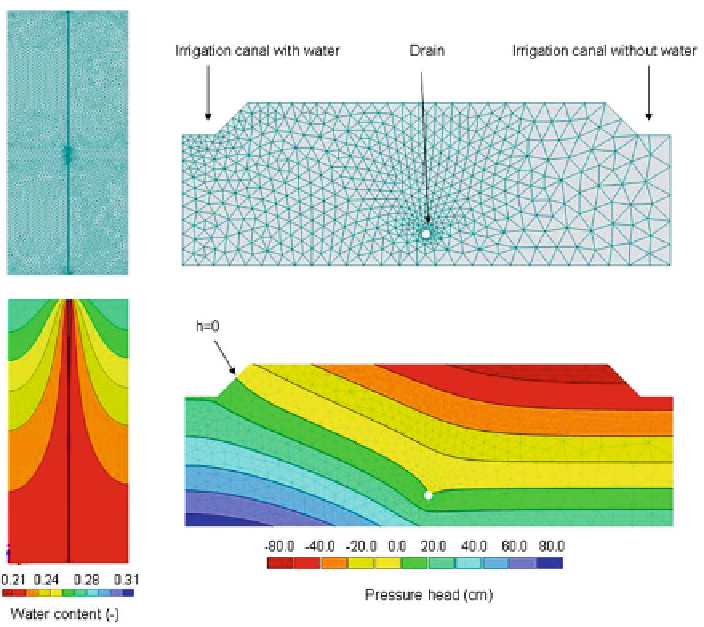Environmental Engineering Reference
In-Depth Information
Fig. 18.17
Examples of triangular finite element grids for regular (
left
) and irregular (
right
)two-
dimensional transport domains. The problem on the left displays a 1-m wide and 2-m high soil
profile with a 0.01-cm wide macropore in the middle and a non-uniform steady-state water content
distribution. The project on the right shows a drain in between two furrows (one dry, one filled with
water) and the resulting steady-state pressure head distribution (groundwater table corresponds to
h
=
0)
HYDRUS-1D (Šimunek and Van Genuchten 2008; Šimunek et al.
1998a
,
2005
),
while others are in the commercial domain, such as HYDRUS-2D (Šimunek et al.
1999b
), HYDRUS (2D/3D) (Šimunek et al.
2006c
), and MODFLOW-SURFACT
(HydroGeoLogic
1996
). The models vary widely in terms of their complexity,
sophistication, and ease of use. Although some models are still being run under
the DOS operating system, with associated difficulties of preparing input files and
interpreting tabulated outputs, many others, especially those in the commercial
domain, are supported by sophisticated graphics-based interfaces that greatly sim-
plify their use (Šimunek et al.
1998a
,
1999b
). Several studies have recently reviewed
and compared various numerical models for vadose zone applications (e.g., MDH
Engineered Solutions Corp.
2003
; Scanlon et al.
2002
; Vanderborght et al.
2005
;
Wilson et al.
1999
). These studies typically compared the precision, speed, and ease
of use of the codes involved.

Search WWH ::

Custom Search